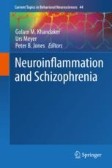Search
Search Results
-
Imaging glial activation in patients with post-treatment Lyme disease symptoms: a pilot study using [11C]DPA-713 PET
The pathophysiology of post-treatment Lyme disease syndrome (PTLDS) may be linked to overactive immunity including aberrant activity of the brain’s...

-
Molecular Imaging of Neuroinflammation in Alzheimer’s Disease and Mild Cognitive Impairment
Alzheimer’s disease (AD) is the most prevalent neurocognitive disorder. Due to the ineffectiveness of treatments targeting the amyloid cascade,...
-
Differences in neuroinflammation in people who started antiretroviral treatment during primary versus chronic HIV infection: an 18kDa Translocator protein (TSPO) positron emission tomography (PET) study
Persistent inflammation is described in people with HIV (PWH) on antiretroviral treatment (ART). Early ART initiation is associated with reduced...

-
TSPO PET Imaging as a Biomarker of Neuroinflammation in Neurodegenerative Disorders
Neuroinflammation is a hallmark feature across the spectrum of neurodegenerative disorders. Central to neuroinflammation is the activation of...
-
The mitochondrial protein TSPO in Alzheimer’s disease: relation to the severity of AD pathology and the neuroinflammatory environment
The 18kD translocator protein (TSPO) is used as a positron emission tomography (PET) target to quantify neuroinflammation in patients. In Alzheimer’s...

-
Osteopontin/secreted phosphoprotein-1 behaves as a molecular brake regulating the neuroinflammatory response to chronic viral infection
BackgroundOsteopontin (OPN) as a secreted signaling protein is dramatically induced in response to cellular injury and neurodegeneration. Microglial...

-

-
Translational Characterization of the Glia Role in Multiple Sclerosis
Glial cells are important players in the pathogenesis of multiple sclerosis (MS)-induced injury to the central nervous system. Characterization of...
-
The Low-Affinity Binding of Second Generation Radiotracers Targeting TSPO is Associated with a Unique Allosteric Binding Site
[ 11 C]-PK11195 (PK11195) has been widely used with positron emission tomography (PET) to assess levels of the translocator protein 18 kDa (TSPO) as a...

-
Positron Emission Tomography in Drug Development
Central nervous system (CNS) drug development poses some unique challenges for drug developers in terms of drug delivery, assessment of target...
-
Dissemination of brain inflammation in traumatic brain injury
Traumatic brain injury (TBI) is recognized as a global health problem due to its increasing occurrence, challenging treatment, and persistent impacts...

-
Glia-Neuron Communication: Not a One-Way Street
Obesity and its comorbidities are increasing at an alarming rate worldwide. A key mechanism in the development of this disease involves dysregulation...
-
Bidirectional Associations among Nicotine and Tobacco Smoke, NeuroHIV, and Antiretroviral Therapy
People living with HIV (PLWH) in the antiretroviral therapy (ART) era may lose more life-years to tobacco use than to HIV. Yet, smoking rates are...

-
Maternal Immune Activation as a Risk Factor for Schizophrenia: Evidence From Preclinical and Clinical Studies
Maternal immune activation (MIA) has been implicated as a risk factor for schizophrenia by several epidemiological studies. Animal models have...
-
Independent and Combined Effects of Nicotine or Chronic Tobacco Smoking and HIV on the Brain: A Review of Preclinical and Clinical Studies
Tobacco smoking is highly prevalent among HIV-infected individuals. Chronic smokers with HIV showed greater cognitive deficits and impulsivity, and...

-
Microstructural brain abnormalities in HIV+ individuals with or without chronic marijuana use
ObjectiveCognitive deficits and microstructural brain abnormalities are well documented in HIV-positive individuals (HIV+). This study evaluated...

-
Neurocognitive Complications of HIV Infection in Women: Insights from the WIHS Cohort
Although sex differences in brain function and brain disorders are well documented, very few studies have had adequate number of women to address...
-
Escalating morphine dosing in HIV-1 Tat transgenic mice with sustained Tat exposure reveals an allostatic shift in neuroinflammatory regulation accompanied by increased neuroprotective non-endocannabinoid lipid signaling molecules and amino acids
BackgroundHuman immunodeficiency virus type-1 (HIV-1) and opiates cause long-term inflammatory insult to the central nervous system (CNS) and worsen...

-
Cytokines, Oxidative Stress and Cellular Markers of Inflammation in Schizophrenia
In this article, we review current evidence linking immune dysfunction in schizophrenia and related psychotic disorders focusing particularly on...
-
The application of positron emission tomography (PET) imaging in CNS drug development
As drug discovery and development in Neuroscience push beyond symptom management to disease modification, neuroimaging becomes a key area of...
